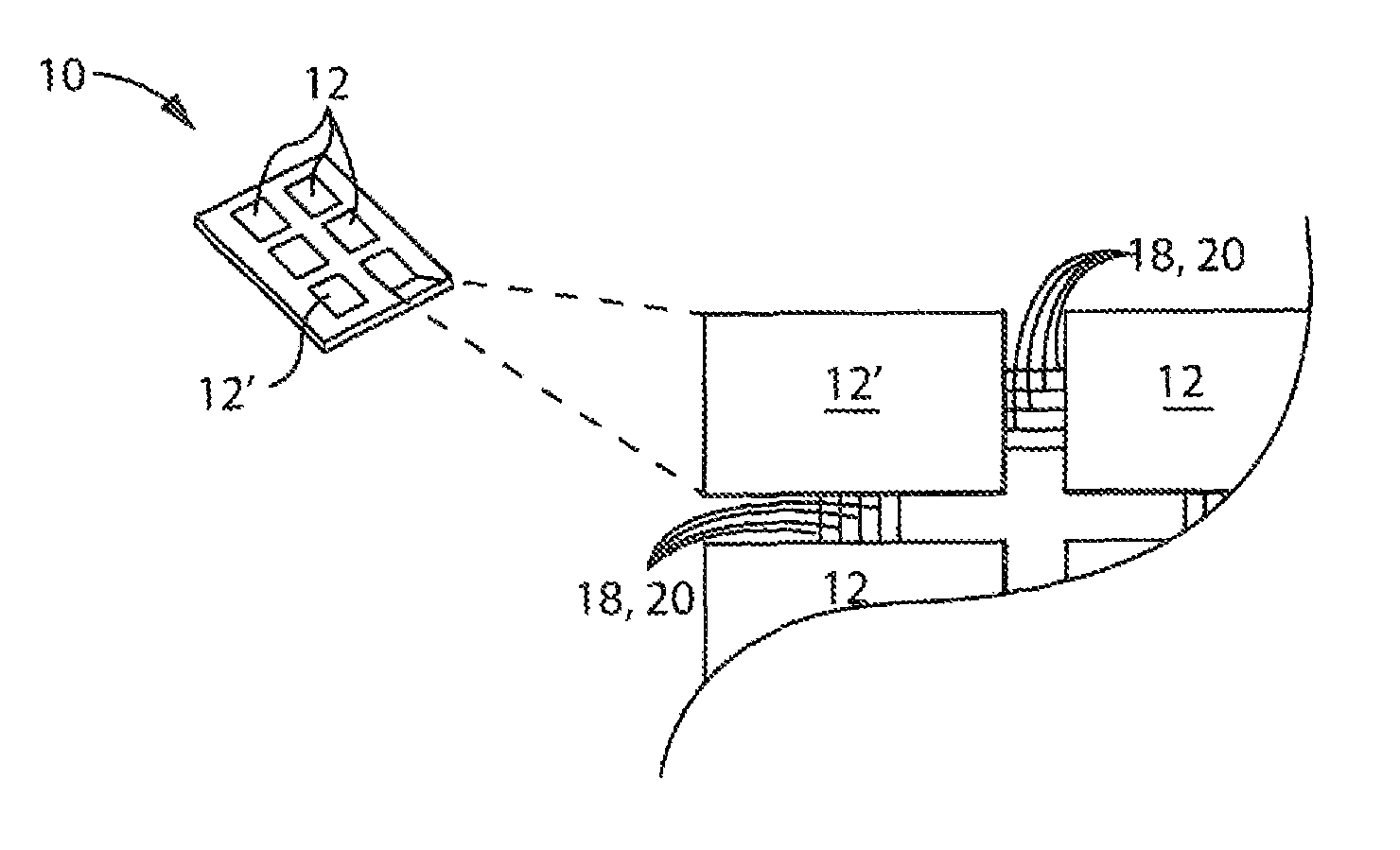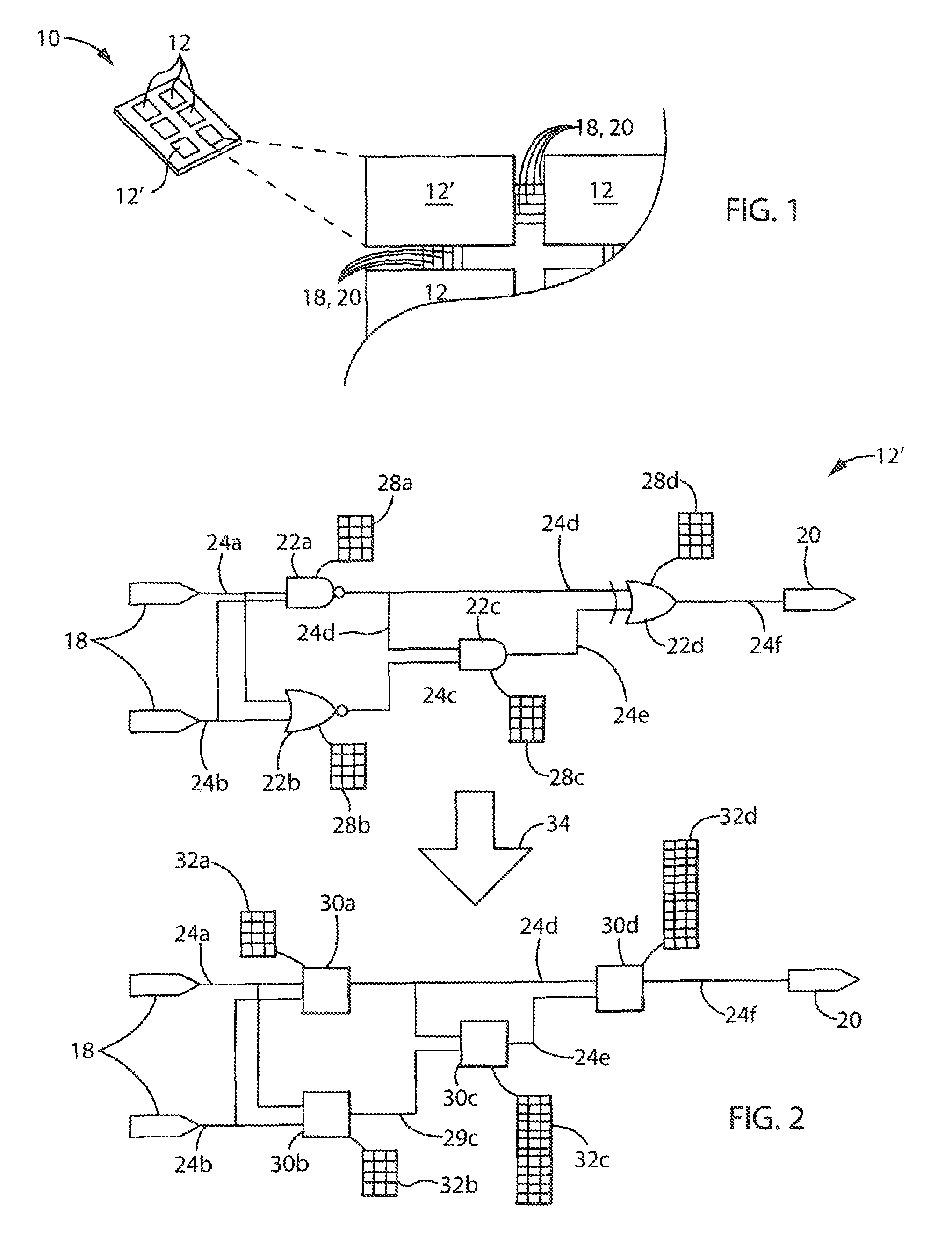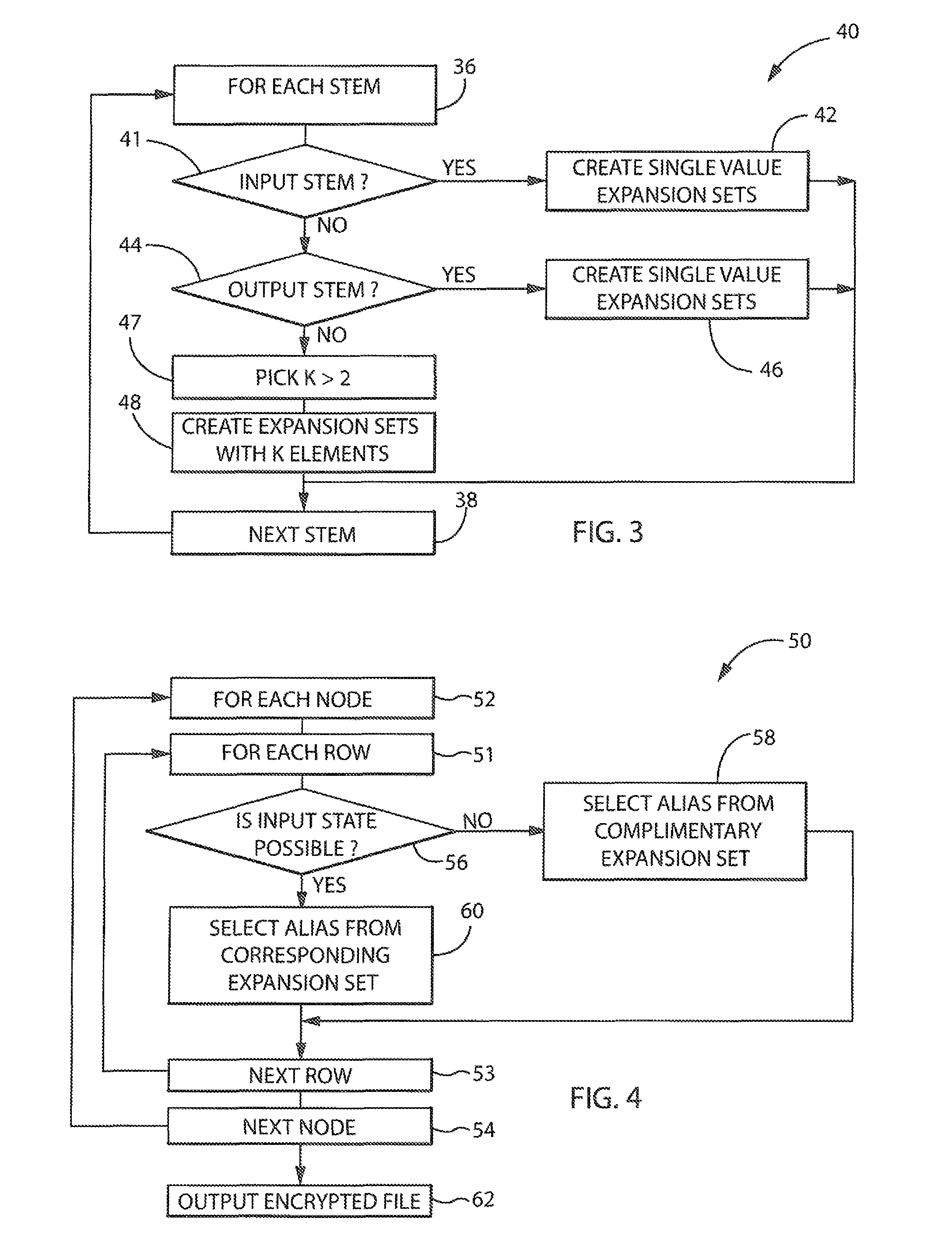Encrypted digital circuit description allowing circuit simulation
a digital circuit and circuit simulation technology, applied in the field of integrated circuit electronic description, can solve the problems of limiting the market for ip cores, unable to simulate the ip core alone or in combination with the other building blocks, and less-expensive hard-core licenses with significant drawbacks
- Summary
- Abstract
- Description
- Claims
- Application Information
AI Technical Summary
Benefits of technology
Problems solved by technology
Method used
Image
Examples
example i
[0069]Referring now to FIGS. 5 and 6, a truth-table 28a for dual input NAND gate of node 22a may be converted to an encrypted truth-table 32a. As depicted, the first two columns of truth-table 28a represent inputs to the node 22a and the third column represents the output of the node 22a in a first step, and expansion sets S1.0, S1.1, S2.0, S2.1 are developed for stems 24a and 24b, respectively. Because input stems 24a and 24b are input stems, the truth-table expansion sets are developed according to process block 42 described above, being single valued expansion sets per equations (3) and (4) described above corresponding to the underlying Boolean logic values received by the node 22a. In addition, expansion set S3.0, S3.1, for output stem 24d, in this example, is based on a K value of 3 as depicted in FIG. 6. The output of the encrypted truth-table 32a is thus randomly selected from the appropriate truth-table expansion set S3.0, S3.1 guided by the corresponding output of truth-ta...
example ii
[0070]Referring now to FIGS. 5 and 7, for an internal node 22, for example the AND gate of node 22c, the encrypted truth-table 32c will be substantially larger than the corresponding truth-table 28c, so that the inputs of the encrypted truth-table 32c can represent all of the permutations of the values of the corresponding expansion sets S3.0, S3.1 and S4.0, S4.1 associated with stems 24d and 24c, respectively, received by the internal node 22c. These expansion sets based on the value of K=3 requires an encrypted truth-table having sixteen rows according to the formula:
ΠiεIj(Ki+1)
[0071]where Ij is the set of stems received by the node of the encrypted truth-table 32.
[0072]As discussed above, each of the rows of the encrypted truth-table 32c may be populated with the permutations of input values corresponding to expansion sets S3.0, S3.1 and S4.0, S4.1 and the outputs of the encrypted truth-table 32c generated by determining the underlying Boolean logical states associated with those...
example iii
[0075]Referring now to FIGS. 5 and 8, the encrypted truth-table 32d for node 22d (an XOR gate) is constructed similarly to those described above except that the output values are all selected from single valued subsets S6.0, or S6.1 to directly reflect the underlying Boolean output of the truth-table 28d. This ensures that the simulation using the encrypted truth-tables 32 provides outputs from the core 12′ that are identical to that provided by the actual core 12′.
[0076]Looking at the second row of the encrypted truth-table 32d, the output is a logical Boolean zero reflecting the underlying Boolean values of the input of 1 per element 0 of truth-table expansion set S3.1 and one per element 1 of truth-table expansion set S5.1.
[0077]Referring to FIG. 9, the functional specification may also include, for example, a layout 64 of the integrated circuit 10 that may be used for fabrication of the integrated circuit, something that is not possible to construct from the information of the n...
PUM
 Login to View More
Login to View More Abstract
Description
Claims
Application Information
 Login to View More
Login to View More - R&D
- Intellectual Property
- Life Sciences
- Materials
- Tech Scout
- Unparalleled Data Quality
- Higher Quality Content
- 60% Fewer Hallucinations
Browse by: Latest US Patents, China's latest patents, Technical Efficacy Thesaurus, Application Domain, Technology Topic, Popular Technical Reports.
© 2025 PatSnap. All rights reserved.Legal|Privacy policy|Modern Slavery Act Transparency Statement|Sitemap|About US| Contact US: help@patsnap.com



